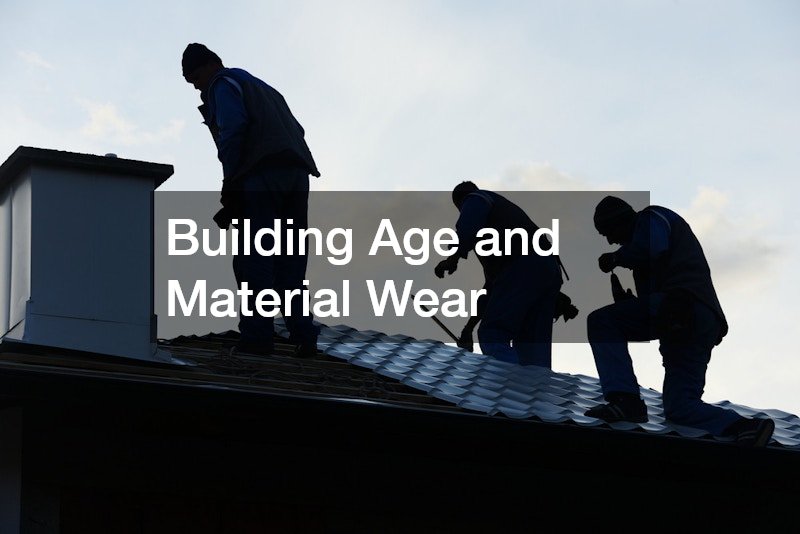Understanding when your commercial roof requires immediate attention can save your business time and money. A roof in disrepair can lead to significant structural damage, potential safety hazards, and increased energy costs. This article explores key signs that indicate the need for a professional roofer and addresses common questions about roof maintenance and repairs.
Cracks, Blisters, and Surface Bubbles
Visible cracks, blisters, and bubbles on your commercial roof surface are early indicators of potential damage. These imperfections can arise from trapped moisture or fluctuations in temperature that cause the roofing material to expand and contract.
Over time, such damage can compromise the integrity of the roofing structure, necessitating prompt professional assessment.
Ignoring these surface issues may lead to extensive interior damage as water seeps through weakened areas. When left unchecked, they can exacerbate into leaks, leading to more costly repairs and potential business interruptions. Engaging a commercial roofer at the first signs of such imperfections is essential in preventing further detriments.
Regular roof inspections can help identify these issues before they escalate. Professional roofers use advanced tools and techniques to accurately assess the severity and origin of these surface problems. By addressing them promptly, businesses can avoid expensive, unforeseen emergencies.
Discolored or Stained Ceilings
Discolored or stained ceilings within a commercial property often signify roof leaks or water intrusion. These visual cues are typically a result of prolonged exposure to moisture, which causes damage to ceiling materials and internal structures. Acting on these signs swiftly can prevent further internal damages and maintain a safe working environment.
Water stains not only pose potential structural harm but can also encourage mold growth. Mold can quickly become a health hazard for building occupants, leading to potential liability issues for businesses. Therefore, it is crucial to engage a professional roofer to determine the cause and remedy the underlying problem.
Water Accumulation and Drainage Issues
Poor drainage and water accumulation on rooftops are urgent issues that demand immediate attention from a commercial roofer. Effective drainage systems are vital in preventing standing water, which can lead to roof and structural damage over time. Regular maintenance routines should include clearing drains and ensuring no debris obstructs water flow.
Water ponding can significantly reduce roofing life spans, leading to premature deterioration of materials. This is especially true for flat roofs, where improper water shedding can cause undue stress on the roofing system. Investing in professional assessment ensures that your drainage issues are addressed before they become critical problems.
Weather Impact and Seasonal Changes
Weather and seasonal changes play significant roles in the wear and tear of commercial roofs. Harsh weather conditions such as heavy rain, snow, wind, and extreme temperatures can strain roofing materials, leading to potential damage. Recognizing the impact of these elements is vital for effective roof maintenance planning.
Over time, constant exposure to adverse weather can cause materials to become brittle, lose elasticity, or decay. For example, the freeze-thaw cycle in colder climates can lead to cracks, necessitating immediate attention. Understanding these dynamics allows businesses to implement timely repairs and prevent long-term structural issues.
Nearby Vegetation and Tree Hazards
Trees and vegetation near commercial buildings can pose a significant threat to roof integrity. Overhanging branches may rub against roofing materials, causing abrasions or falling debris that dents or punctures the roof. During storms, trees or large branches pose hazards that could lead to catastrophic roof damage.
The accumulation of leaves and organic material in gutters can cause drainage obstructions, promoting roof deterioration. Regular maintenance, including trimming back branches and removing debris, is crucial for minimizing these risks. Enlisting a commercial roofer to assess such risks ensures vegetation doesn’t impede roof functionality.
Building Age and Material Wear
As a building ages, the likelihood of roof material wear and failure increases. Older structures are more prone to issues such as membrane deterioration, sealant failure, and fastener fallout, each contributing to roof degradation. Recognizing the implications of aging on building materials is essential for proactive maintenance and repairs.
The choice of materials used in older roofs might not meet current standards or specifications. As technology advances, opting for upgraded materials during renovations can greatly enhance roof durability. Consulting with a reputable roofer ensures that material upgrades are compliant and beneficial for long-term building sustainability.
Evaluating Cost Implications and Safety Concerns
Evaluating the cost implications of roofing issues is essential in deciding when to call in professionals. Initial signs of damage, if addressed early, can save businesses substantial sums by circumventing larger repair projects. Immediate professional intervention can prevent minor issues from escalating into full-scale replacements.
Recognizing the signs of roof damage and understanding the need for timely repairs ensures the longevity of your commercial property. Proactive measures and professional assessments can prevent costly repairs and maintain business operations seamlessly. Ensuring regular inspections and prompt repairs not only secures structural safety but optimizes investment returns in property management.

